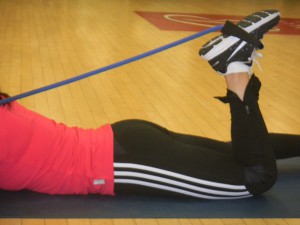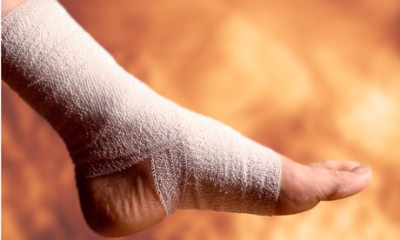Our smartphones, tablets, and laptops have connected us to the world in ways that we could never have imagined. We carry our offices, our social lives, and our entertainment with us everywhere we go. But this constant connectivity often comes with a trade-off, one...
If you find yourself frequently grappling with nagging pain in your neck, a persistent ache in your lower back, or tightness across your shoulders, your body might be telling you to fix your posture. These early signs of poor postural habits are just the tip of the...
Shoulder pain can affect much more than just our comfort. It can limit our ability to pick up our children, carry groceries, or even reach for something on a high shelf. If you’ve been struggling with nagging shoulder pain, there’s a strong possibility it may be due...
Tips for Exercising after a Mild Sports Injury

When you’ve experienced a sports injury, it’s important to allow time to fully recover before getting back to your normal exercise routine. If you put stress on the affected area before it’s completely healed, you risk injuring it all over again, and that can result in more damage and more recovery time.
You may have been working out with the rest of your body and isolating the injury while it’s still healing, but incorporating it back into your routine is a slow process that takes a lot of patience. It’s important to make sure you’re not performing any intense activity, and if at any point you feel pain at the site of the injury, you should stop immediately to avoid further injury.
The following guide will help you safely get back to your normal exercise routine after you’ve suffered an injury:
- If your injury was severe and involved surgery or a serious fracture, the time between your injury and when you start to exercise again will be greater than if your injury was mild. If you undergo surgery or suffer a broken bone, you’ll be in a cast for a period of time, during which you will heal almost completely. This type of injury may also require physical therapy sessions in order to regain the full range of motion in that area.
- After your injury has had some time to heal and the pain and swelling have diminished, gradually begin moving the injured area. Because muscle inactivity can lead to decrease in muscle strength, you’ll want to start testing your muscles as soon as possible to prevent muscle loss. Start using the affected area sparingly by performing stretches to regain flexibility and range of motion.
- If you successfully stretched out the injury without pain, slowly start to put weight on it. Soreness and swelling will likely return as you increase activity level which is normal, but remember to stop any exercise that causes pain to avoid re-injury.
- After stretching and bearing weight on the injury, you’ll want to test it to gauge if it’s strong enough to use during exercise. Start out with low-intensity workouts to see how much your injury can tolerate. It’s likely that you’ll experience some swelling as you continue to exercise. Use it as a guide to determine how much the injury has recovered.
- Continue less intense workouts for a few days to make sure that the injury is strong enough to handle more strenuous exercise. If you’re not experiencing pain and your swelling is minimal, you should be safe to work out like you did before the injury.
- Prepare the injured area with an elastic compression bandage or medical tape to provide extra stability. Take it easy when returning to your normal workouts and don’t push yourself too hard. Be cautious of the area and check for any swelling. It may be slightly sore for a few days afterwards, so you may want to apply ice to treat the pain.
The rule of thumb is not to return to exercising before your injury has recovered. This typically results in an even more severe injury. Be sure to discuss your exercise plans with your doctor and follow their advice.


